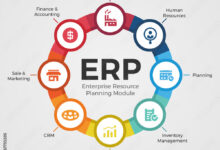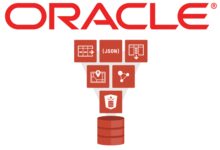ERP Cloud Migration Cost: 7 Shocking Truths You Must Know
Migrating your ERP to the cloud can save money—but only if you know the real costs. Here’s what most companies miss.
ERP Cloud Migration Cost: Understanding the Big Picture

When businesses consider moving their Enterprise Resource Planning (ERP) systems to the cloud, one question dominates: What will it cost? The answer isn’t simple. ERP cloud migration cost varies widely based on company size, industry, legacy systems, and implementation strategy. According to Gartner, global spending on cloud ERP is projected to exceed $50 billion by 2025, showing just how critical this shift has become. But without a clear understanding of all cost components, organizations risk budget overruns, delays, and failed implementations.
Why ERP Cloud Migration Is More Than Just Software
Many assume that cloud ERP is cheaper because there’s no need to buy servers or maintain on-premise data centers. While infrastructure savings are real, the full erp cloud migration cost includes much more than subscription fees. Hidden expenses like data migration, integration, training, and change management often catch companies off guard.
- Subscription licensing (SaaS model)
- Data migration and cleansing
- System integration with existing tools
- User training and support
- Customization and configuration
Factors That Influence ERP Cloud Migration Cost
Several variables determine how much you’ll spend. These include the complexity of your current ERP system, the number of modules being migrated, data volume, and whether you’re using a phased or big-bang approach. Industry-specific compliance needs (like HIPAA for healthcare or SOX for finance) also add layers of complexity and cost.
“The biggest mistake companies make is budgeting only for software licenses and ignoring the human and process costs of change.” — Forrester Research
Breaking Down ERP Cloud Migration Cost Components
To truly understand the erp cloud migration cost, you need to break it down into tangible categories. This helps avoid surprises and allows for better forecasting. Let’s explore each major cost bucket in detail.
Licensing and Subscription Fees
Unlike traditional ERP systems where you pay a large upfront license fee, cloud ERP operates on a subscription model (usually per user per month). Vendors like SAP, Oracle, and Microsoft Dynamics 365 offer tiered pricing based on functionality and user roles.
- Basic users: $50–$100/month
- Full-access users: $150–$300/month
- Enterprise-wide deployments: $500K–$5M+ annually
While predictable, these fees accumulate over time and can surpass on-premise costs in the long run if not managed properly.
Implementation and Consulting Services
This is often the largest single expense. Hiring consultants to configure the system, migrate data, and ensure compliance can cost anywhere from $100,000 to over $10 million for large enterprises. Implementation partners certified by ERP vendors charge between $150–$300/hour.
- Project management and planning
- System configuration and setup
- Data mapping and transformation
- Testing and validation
According to Panorama Consulting, the average ERP implementation takes 14 months and costs $1.3 million for mid-sized companies.
Data Migration and Cleansing
Moving years of transactional data from legacy systems is not just technical—it’s strategic. Poor data quality leads to inaccurate reporting and operational errors. Data migration typically accounts for 15–25% of total erp cloud migration cost.
- Data extraction from old systems
- Deduplication and normalization
- Validation and reconciliation
- Testing in staging environments
Tools like Talend or Stitch can automate parts of this process, but expert oversight is still required.
Hidden ERP Cloud Migration Costs Most Companies Overlook
The visible costs are easy to plan for. The hidden ones? They derail budgets and timelines. Let’s uncover the silent budget killers in every erp cloud migration cost analysis.
Change Management and Employee Training
People resist change. A new ERP system changes how employees do their jobs—from finance to HR to supply chain. Without proper change management, adoption rates plummet, productivity drops, and ROI evaporates.
- Training programs (in-person, e-learning, workshops)
- Internal champions and super-users
- Communication campaigns
- Ongoing support desks
Training alone can cost $5,000–$15,000 per employee in complex organizations. Multiply that by hundreds of users, and the number becomes staggering.
Integration with Third-Party Systems
Your ERP doesn’t work in isolation. It connects to CRM, payroll, e-commerce, and supply chain platforms. Each integration requires custom development, middleware, or API management tools—adding significant cost.
- API licensing fees
- Middleware platforms (e.g., MuleSoft, Dell Boomi)
- Custom coding and testing
- Ongoing maintenance
For example, integrating SAP S/4HANA Cloud with Salesforce can take 3–6 months and cost $200K+ depending on complexity.
Downtime and Business Disruption
During migration, systems may be offline or unstable. Orders might be delayed, invoices unprocessed, payroll miscalculated. The cost of downtime can exceed direct migration expenses.
“A single hour of ERP downtime can cost large manufacturers over $100,000 in lost productivity and revenue.” — Aberdeen Group
Phased rollouts reduce risk but extend timelines. Big-bang migrations are faster but riskier. Either way, the erp cloud migration cost must include contingency for operational disruption.
How Company Size Impacts ERP Cloud Migration Cost
A small business with 50 employees faces a very different cost structure than a multinational corporation with 10,000 users. Let’s break down how scale affects the erp cloud migration cost.
Small and Medium Businesses (SMBs)
SMBs typically use simplified ERP solutions like NetSuite, Acumatica, or Microsoft Dynamics 365 Business Central. These are designed for faster deployment and lower complexity.
- Average migration cost: $50,000–$500,000
- Implementation time: 3–6 months
- Primary focus: Core finance and operations
- Common pitfalls: Underestimating training needs
For SMBs, the biggest advantage is agility. They can leverage pre-built templates and cloud-native features to reduce customization costs.
Enterprises and Large Organizations
Large companies often run complex, multi-country ERP environments with deep customizations. Migrating to the cloud requires extensive planning, governance, and phased execution.
- Average migration cost: $1M–$10M+
- Implementation time: 12–24 months
- Key challenges: Data governance, regulatory compliance, legacy system dependencies
- Common strategy: Hybrid cloud or multi-tenant SaaS
Enterprises also face higher consulting fees due to the need for specialized architects, security experts, and integration specialists.
Industry-Specific Cost Variations
Industries like manufacturing, healthcare, and financial services have unique compliance and operational requirements that drive up erp cloud migration cost.
- Manufacturing: Need for real-time inventory, shop floor integration
- Healthcare: HIPAA compliance, patient data handling
- Financial Services: SOX, audit trails, transaction integrity
For example, a pharmaceutical company migrating to Oracle Cloud ERP must ensure 21 CFR Part 11 compliance, which adds validation and documentation costs.
Strategies to Reduce ERP Cloud Migration Cost
You don’t have to spend millions to move to the cloud. With the right strategy, you can cut erp cloud migration cost by 30–50% without sacrificing quality.
Choose the Right Deployment Model
Not all cloud ERP solutions are the same. Understanding the differences between SaaS, private cloud, and hybrid models can save significant money.
- SaaS (Public Cloud): Lowest upfront cost, fastest deployment, but less customization
- Private Cloud: More control, higher security, but higher cost
- Hybrid: Mix of on-premise and cloud; useful for regulated data
For most companies, SaaS offers the best balance of cost and functionality.
Leverage Automation and Pre-Built Templates
Modern ERP vendors offer industry-specific templates and automated migration tools. Using these reduces consulting hours and speeds up deployment.
- SAP Activate methodology
- Oracle Cloud Accelerators
- Microsoft FastTrack for Dynamics 365
These tools can cut implementation time by 40% and reduce errors during data migration.
Phased Rollout vs. Big Bang: Which Saves More?
The debate between phased and big-bang migration isn’t just technical—it’s financial.
- Phased Rollout: Migrate by module (e.g., finance first, then HR). Lower risk, but longer timeline and higher total cost due to parallel systems.
- Big Bang: Full switch at once. Higher risk, but shorter timeline and lower long-term support costs.
For cost-conscious organizations, a hybrid approach—rolling out by region or division—often works best.
Real-World ERP Cloud Migration Cost Examples
Theory is one thing. Real-world data is another. Let’s look at actual erp cloud migration cost examples from different industries and company sizes.
Case Study: Mid-Sized Manufacturer ($150M Revenue)
This company migrated from an on-premise SAP ECC system to SAP S/4HANA Cloud over 18 months.
- Total cost: $2.1 million
- Breakdown:
- Licensing: $600,000/year
- Consulting: $900,000
- Data migration: $300,000
- Training: $150,000
- Integration: $150,000
- ROI achieved in 2.5 years through improved inventory accuracy and faster month-end closing.
Case Study: Retail Chain with 200 Stores
This retailer moved from Oracle E-Business Suite to Oracle Cloud ERP in a phased rollout across regions.
- Total cost: $3.8 million over 2 years
- Key cost drivers:
- Integration with POS systems: $500,000
- Custom reporting for merchandising: $300,000
- Downtime during cutover: Estimated $200,000 in lost sales
- Benefits: Real-time inventory visibility, 30% faster financial reporting.
Case Study: Healthcare Provider (5 Hospitals)
Migrated from a legacy system to Workday Financial Management to improve compliance and reporting.
- Total cost: $4.2 million
- Major expenses:
- HIPAA-compliant data migration: $700,000
- Staff retraining: $400,000
- Integration with EHR systems: $600,000
- Outcome: Reduced audit preparation time by 60%, improved grant tracking.
Future Trends Impacting ERP Cloud Migration Cost
The landscape of ERP cloud migration is evolving fast. New technologies and market shifts are reshaping the erp cloud migration cost equation.
AI and Machine Learning in ERP
Vendors are embedding AI into cloud ERP for predictive analytics, automated journal entries, and intelligent procurement. While these features add value, they also increase licensing costs.
- AI-powered forecasting tools: +15–25% to subscription cost
- Automated anomaly detection in financials
- Chatbots for employee self-service
However, AI can reduce long-term operational costs by minimizing manual work.
Low-Code/No-Code Customization
Modern cloud ERPs allow business users to build custom workflows without coding. This reduces dependency on expensive developers.
- Microsoft Power Platform integration with Dynamics 365
- Oracle Visual Builder
- SAP Build
These tools can cut customization costs by up to 50%, especially for non-critical processes.
Subscription Model Evolution
Vendors are moving from per-user pricing to value-based or outcome-based models. For example, you might pay based on transaction volume or revenue processed.
- Potential for lower entry costs
- Risk of cost inflation as business grows
- Need for tighter contract management
This shift requires CFOs to rethink how they budget for ERP long-term.
How to Budget Accurately for ERP Cloud Migration Cost
Accurate budgeting is the foundation of a successful migration. Follow these steps to avoid costly surprises.
Conduct a Comprehensive Discovery Phase
Before any contract is signed, invest in a discovery phase. This includes process mapping, data assessment, and stakeholder interviews.
- Identify all current ERP modules and dependencies
- Assess data quality and volume
- Map business processes to cloud capabilities
- Estimate user count and roles
This phase typically costs $20K–$100K but can save millions by preventing scope creep.
Build a Total Cost of Ownership (TCO) Model
Don’t just look at year one. Build a 5-year TCO model that includes:
- Subscription fees
- Implementation costs
- Ongoing support and upgrades
- Internal labor (project team, super-users)
- Training refreshes
- Contingency (10–15%)
Compare this to your current on-premise TCO to justify the investment.
Engage Stakeholders Early
Finance, IT, operations, and HR must all be involved from day one. Siloed planning leads to missed requirements and last-minute changes that inflate erp cloud migration cost.
- Form a cross-functional project team
- Hold regular alignment meetings
- Use collaborative tools like Jira or Asana
Early engagement reduces rework and ensures smoother adoption.
What is the average ERP cloud migration cost?
The average cost ranges from $50,000 for small businesses to over $10 million for large enterprises. Mid-sized companies typically spend between $500,000 and $2 million, depending on complexity, data volume, and customization needs.
What are the biggest hidden costs in ERP cloud migration?
The biggest hidden costs include employee training, change management, system integration, data cleansing, and business downtime. These often account for 30–50% of the total erp cloud migration cost but are frequently underestimated in initial budgets.
How can I reduce my ERP cloud migration cost?
You can reduce costs by choosing a SaaS model, using pre-built templates, automating data migration, adopting a phased rollout, and leveraging low-code tools. Engaging experienced consultants early and conducting thorough discovery also prevent costly rework.
Does cloud ERP save money in the long run?
Yes, cloud ERP can save money over time through reduced IT infrastructure costs, faster updates, and improved operational efficiency. However, long-term savings depend on proper implementation, user adoption, and ongoing management. Poorly executed migrations often end up costing more than on-premise systems.
How long does ERP cloud migration take?
Migration timelines vary: small businesses may complete it in 3–6 months, while large enterprises can take 12–24 months. Factors like data complexity, integration needs, and organizational readiness significantly impact duration.
Migrating your ERP to the cloud is a strategic decision with far-reaching financial implications. The erp cloud migration cost isn’t just about software—it’s about people, processes, and long-term value. By understanding all cost components, planning thoroughly, and learning from real-world examples, organizations can avoid budget overruns and achieve a successful transition. The key is to look beyond the sticker price and invest in the full ecosystem of change. With the right approach, cloud ERP becomes not just a technology upgrade, but a catalyst for growth and efficiency.
Further Reading:







